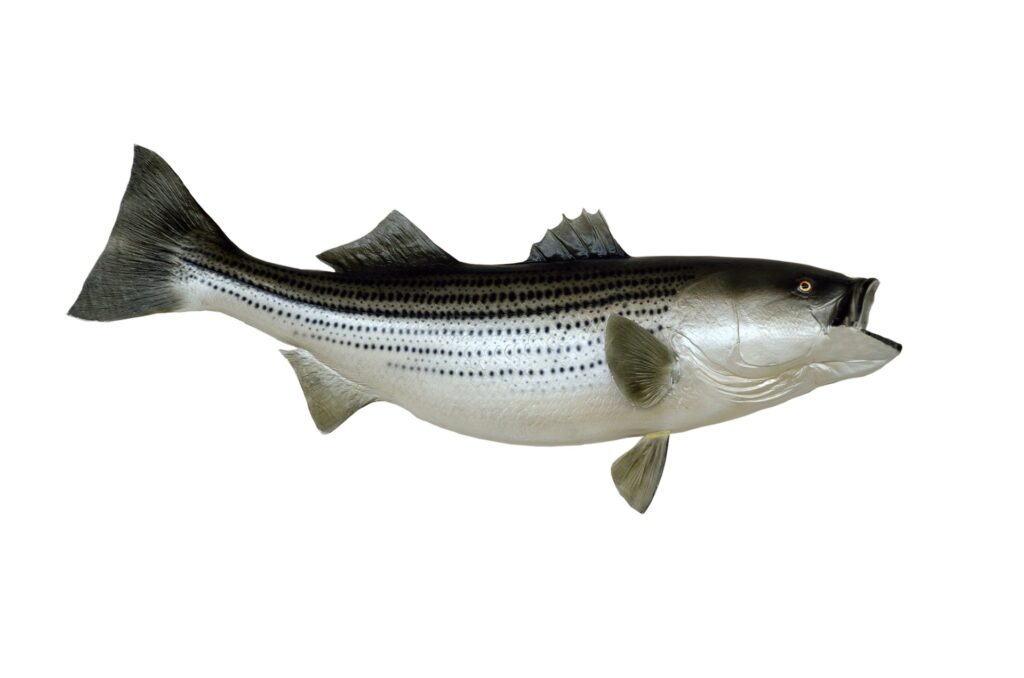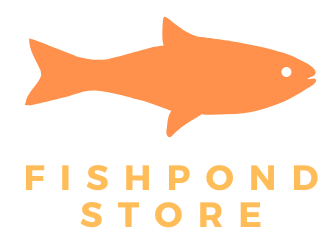Have you ever wondered can bass live in small ponds? We will explore the fascinating world of bass and investigate whether these popular sportfish are able to survive and flourish in smaller bodies of water.
Join us as we unveil the secrets of bass biology and habitat preferences, uncovering the potential for these magnificent fish to adapt and thrive in restricted environments. Prepare to be amazed by the resilience and adaptability of bass in their quest for survival!
Factors affecting bass survival in small ponds
When it comes to the survival of bass in small ponds, there are several factors that play a crucial role. The size of the pond, water quality, availability of food, presence of predators, and oxygen levels all contribute to the overall well-being and survival of bass in these environments. By understanding and addressing each of these factors, you can create an ideal habitat for bass in small ponds.
Size of the pond
The size of the pond is one of the primary factors to consider when it comes to bass survival. While bass can technically live in small ponds, it’s essential to meet certain requirements to ensure their well-being.
Minimum size requirement
Ideally, a small pond should have a surface area of at least 5,000 square feet to provide enough space for bass to thrive. Anything smaller than this may result in overcrowding, limited resources, and increased competition among the fish.
Importance of depth
Depth is another crucial aspect to consider. Bass require water that is deep enough to accommodate their size and allow them to migrate to different depths to regulate their body temperature. A depth of at least 6 feet is recommended for small ponds.
Surface area considerations
While the total surface area of the pond is important, it’s equally important to consider the overall shape of the pond. Long, narrow ponds provide less surface area per volume of water, which can impact oxygen levels and limit the available habitat for bass. A more circular or oval-shaped pond is generally better for bass survival.

Water quality
Maintaining good water quality is vital for the survival and overall health of bass in small ponds. Several factors contribute to water quality, including cleanliness, pH levels, temperature, and chemical balance.
Importance of clean water
Clean water is essential for the well-being of bass. Regularly removing debris, such as leaves and algae, can help maintain water clarity and reduce the risk of unwanted contaminants.
pH levels
Bass thrive in water with a pH level between 6.5 and 8. Although they can tolerate variations within this range, extreme pH levels can stress the fish and negatively impact their health. Regular testing of the water’s pH level is recommended to ensure a suitable environment for bass.
Temperature
Water temperature also plays a significant role in bass survival. They are cold-blooded creatures, meaning their body temperature is influenced by the surrounding environment. Optimal water temperatures for bass range between 60 and 75 degrees Fahrenheit. Sudden temperature changes or prolonged exposure to extreme temperatures can be harmful to the fish.
Chemical balance
Maintaining a proper chemical balance in the water is essential for bass survival. High levels of ammonia, nitrites, or nitrates can be toxic to fish. Regular testing and appropriate treatment, such as the use of water conditioners or filtration systems, can help maintain a healthy chemical balance.
Availability of food
The availability of an adequate food supply is crucial for the survival and growth of bass in small ponds. Understanding the types of food bass require, their feeding habits, and ensuring a sufficient food source are necessary for their well-being.
Types of food for bass
Bass are carnivorous fish and rely on a variety of prey for sustenance. They primarily feed on smaller fish, insects, crustaceans, and amphibians. Providing a diverse range of food options can help meet their nutritional needs and contribute to their overall health.
Feeding habits
Bass are opportunistic feeders and can be both active hunters and ambush predators. They have a voracious appetite and feed throughout the day. Understanding their feeding habits can help optimize their feeding schedule and ensure they have access to food when they are most active.
Ensuring sufficient food
To ensure a sufficient food supply for bass in small ponds, it is beneficial to create a balanced ecosystem. This can be achieved by implementing a proactive management plan that promotes the growth of natural food sources, such as aquatic plants and other organisms. Supplementary feeding with commercially available fish food may also be necessary, especially during periods of limited natural food availability.

Presence of predators
The presence of predators can significantly impact bass survival in small ponds. Identifying common pond predators and implementing strategies to manage their populations are essential for maintaining a healthy bass population.
Identifying common pond predators
Common predators that pose a threat to bass in small ponds include larger fish species, such as pike or catfish, aquatic birds, snakes, and mammals like raccoons or otters. Regular observation and monitoring of the pond can help identify any potential predators and take appropriate action to mitigate their impact.
Managing predator populations
To manage predator populations, several strategies can be employed. Implementing barriers, such as netting or fencing, can help prevent larger predators from accessing the pond. Controlling vegetation and maintaining a healthy bass population can also indirectly reduce predator impacts by minimizing the availability of hiding places or decreasing predator-prey interactions.
Oxygen levels
Maintaining adequate oxygen levels is crucial for bass survival. Insufficient oxygen can lead to stress, reduced growth rates, and even death. Understanding the importance of oxygen, factors that influence oxygen levels, and preventative measures can help ensure the well-being of bass in small ponds.
Importance of oxygen for bass
Just like any other fish, bass rely on dissolved oxygen in the water to survive. Oxygen is essential for their respiration process and overall metabolism. Without sufficient oxygen, bass cannot extract the required energy from their food and may suffer from oxygen deprivation.
Factors influencing oxygen levels
Several factors can influence oxygen levels in small ponds. Overcrowding, excessive nutrient levels, algal blooms, high water temperatures, and stagnation can all contribute to decreased oxygen levels. These factors can disrupt the natural balance of oxygen production and consumption, putting bass at risk.
Preventing oxygen depletion
To prevent oxygen depletion, it is crucial to maintain a healthy ecosystem balance. Regular water testing can help identify any potential issues with oxygen levels. Implementing aeration systems, such as fountains or diffusers, can help increase oxygen saturation in the water. Proper vegetation management, routine water circulation, and avoiding excessive nutrient inputs can also contribute to maintaining adequate oxygen levels.
Creating an ideal habitat for bass in small ponds
To create an ideal habitat for bass in small ponds, several structural considerations, habitat features, and vegetation maintenance practices can be implemented.

Structural considerations
Structural considerations involve ensuring a suitable environment for bass. This includes providing adequate depth, proper substrate, and appropriate water flow to mimic natural conditions. Incorporating features like submerged logs, rock formations, and shallower areas can enhance the overall habitat and promote optimal bass survival.
Adding habitat features
Adding habitat features can provide additional shelter and foraging opportunities for bass. Installing artificial fish habitats, such as brush piles or spawning beds, can create a more diverse and structurally rich ecosystem. These features can offer protection for bass from predators and enhance their overall habitat quality.
Maintaining vegetation
Maintaining suitable vegetation plays a crucial role in bass survival. Aquatic plants not only contribute to oxygen production but also provide cover for bass and their prey. Regular control of excessive vegetation growth and promoting a balanced aquatic plant community can optimize the habitat for bass in small ponds.
Stocking bass in small ponds
When stocking bass in small ponds, careful consideration must be given to the number and size of the fish being introduced.
Choosing the right number of bass
The number of bass to stock in a small pond depends on its size, available resources, and management objectives. Overstocking can lead to resource depletion, stunted growth, and increased competition for food. It is essential to consult with fisheries professionals or experts to determine the appropriate stocking density for the specific pond conditions.
Selecting the right size
When stocking bass in small ponds, selecting the right size is crucial. Juvenile bass are more adaptable to new environments and have a higher survival rate. However, larger bass can offer immediate recreational fishing opportunities. Balancing the size of stocked bass with the long-term goals of the pond is important for sustainable management.
Introducing bass to the pond
The proper introduction of bass to a small pond is essential for their acclimation and survival. Slow acclimation to the pond water temperature and ensuring healthy fish from reputable sources can help minimize stress and increase the likelihood of successful establishment.
Managing bass populations in small ponds
To effectively manage bass populations in small ponds, certain strategies must be implemented. This includes establishing feeding strategies, monitoring fish health, and practicing selective harvesting and culling.
Feeding strategies
Implementing a feeding strategy that supplements natural food sources can help regulate the bass population and promote optimal growth. Feeding can be done using commercially available fish feed, ensuring the correct portion size and frequency to prevent overfeeding and water quality issues.
Monitoring fish health
Regular monitoring of fish health is crucial for early detection of any potential issues or diseases. Observing fish behavior, physical appearance, and growth rates can help identify and address health concerns promptly. Consulting with fisheries professionals can provide valuable guidance on monitoring protocols and disease prevention strategies.
Harvesting and culling
Harvesting and culling are important management practices to maintain a balanced bass population. Removing surplus or stunted bass can prevent overpopulation and ensure a healthy population with enough resources to support growth and reproduction. Regular assessments of the population and implementing selective harvest strategies are keys to sustainable bass management.
Benefits of having bass in small ponds
Having bass in small ponds offers several benefits, including ecological balance, recreational fishing opportunities, and educational experiences.
Ecological balance
Bass play a vital role in maintaining the ecological balance of small ponds. They help control populations of smaller fish, such as minnows or sunfish, and prevent overpopulation. By regulating prey populations, bass contribute to the overall health and stability of the pond’s ecosystem.
Recreational fishing
Small ponds with bass present excellent recreational fishing opportunities. Bass are highly prized game fish known for their fight and ability to provide an exciting angling experience. The presence of bass in small ponds can offer recreational anglers a chance to enjoy fishing closer to home and connect with nature.
Educational opportunities
Small ponds with bass can also provide valuable educational opportunities. They serve as living laboratories where people, especially children, can learn about aquatic ecosystems, biodiversity, and the interrelationships between different species. The study of bass and their habitat can foster a deeper understanding and appreciation for the natural world.
Can Bass Live In Small Ponds
In conclusion, creating a suitable environment for bass in small ponds involves considering factors such as pond size, water quality, food availability, predator presence, and oxygen levels.
By addressing these factors and implementing the proper management strategies, you can ensure the survival and well-being of bass in small pond ecosystems. The benefits of having bass in these environments extend beyond their ecological contributions and extend to recreational fishing and educational opportunities for individuals and communities alike.
Taking into account all the above considerations, hopefully you will now be ready to add some small bass to your pond. Need any further information, then take a look at ‘What Is The Most Important Part Of A Fish Pond‘.
